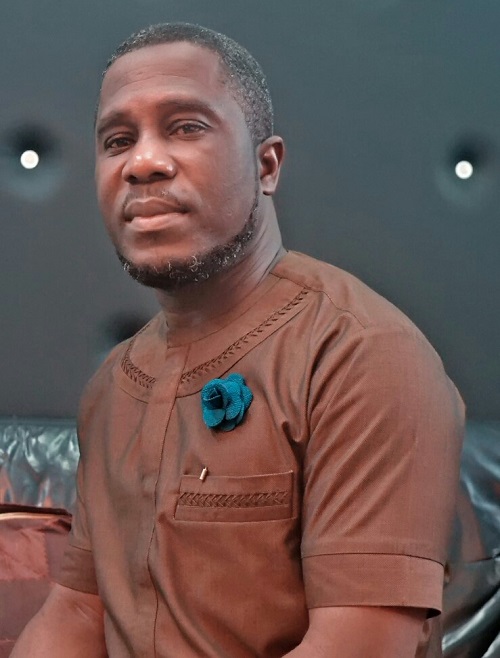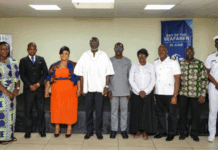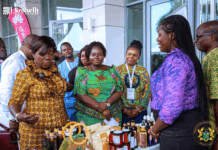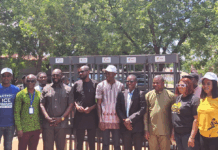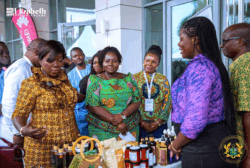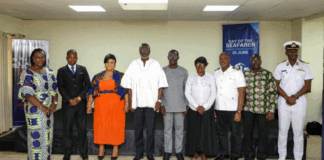Upon attaining independence in 1957, Osagyefo Dr. Kwame Nkrumah the new leader of the country found energy as an enabler to economic liberation, having achieved political liberation.
Osagyefo saw the need for adequate, accessible, consistent, and affordable electricity to help boost agriculture, increasing trade, improving transportation, expanding industries; serving as building blocks to drive Ghana’s economic growth, industrial, investment and development programmes. Osagyefo was also led with the understanding that hydrocarbons are a prime factor to production, and the world has traditionally been an oil-based economy. He therefore set out to build the necessary structures to explore the use of domestic hydrocarbons, in case commercial discovery is made.
Hydrocarbon Developments
Ghana’s hydrocarbon discovery in commercial quantities in 2007 was not accidental, but rather years of concerted effort by all.
The exploration for oil and gas in Ghana started in 1896 in onshore Tano basin in the Western Region, according to the “Ghana Geological Survey Bulletin No. 40”. At the time, wells were drilled, without geological understanding and the benefit of seismic data. International oil companies including the French oil company Societe Francaise de Petrole (SFP) were latter to join in the exploration of oil and gas in Ghana, encountering heavy oil, light oil and gas in the drilling process in the onshore Tano basin around Bonyere, Epunsa, and Kobnaswaso, and getting very good oil indications, though not on commercial scale.
During the First Republic, onshore exploration activities continued to cover the Accra/Keta and Voltaian basins. However, in 1967 the focus shifted from onshore to offshore exploration with oil companies signing petroleum agreements (PAs) to explore the continental shelf, leading to the Saltpond oil field by Signal/Amoco Group in 1970. In the decade that followed, exploration for commercial oil continued both onshore and offshore, including the drilling of the first deep-water well in the CTP.
With the formation of the Ghana National Petroleum Corporation (GNPC) in 1983, the passage of Petroleum Exploration and Production Law (1984) and promulgation of Petroleum Income Tax Law (1987), several Petroleum Agreements with international oil companies such as Atlantic Richfield Corporation (ARCO), Amoco, and Diamond Shamrock (Onshore Keta) were executed.
Within 2001 and 2007, exploration for commercial hydrocarbons intensified, shifting focus from shallow water to deep-water areas, with some independent Oil Companies such as Kosmos Energy, Hess Corporation and Tullow Oil acquiring exploration and production rights over the areas.
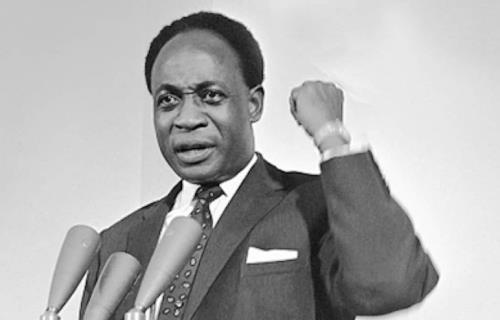
The wells drilled proved the existence of an active petroleum system in the deep-water, and effectively reduced the risk of petroleum generation in Ghana’s deep-water. In 2007, Kosmos Energy, Anadarko, Tullow Oil and E. O. Group struck a significant column of high grade oil in the Mahogany prospect with the Mahogany-1 well in the West CTP license; the most significant discovery crowning years of concerted effort by all.
Osagyefo Dr. Kwame Nkrumah was convinced by earlier findings that one day Ghana would strike oil and gas in commercial quantities, and began to put in place institutions and mechanisms to help harness the petroleum in case a discovery is made.
Downstream Petroleum
After Ghana has attained independence in March 1957, Osagyefo Dr. Kwame Nkrumah, as part of his grand vision of industrialization, infrastructural development and oil security, negotiated for the construction and operation of an oil refinery at Tema, the eastern port city of Ghana. The Osagyefo led-Government of Ghana (GoG) built Ghana’s first and sole oil refinery in 1963 to stimulate the economic development of the country and for job creation.
The establishment of a petroleum refinery follows two agreements (Agreements “A” and “B”) signed in 1961 between the Government of Ghana (GoG) and Ente Nazionale Idrocarburi (ENI) Group of Italy for the construction of the Ghanaian Italian Petroleum (GHAIP) Company refinery, to drive Ghana’s economic growth, industrial, investment and development programmes.
The establishment of the refinery, reflected at the time “Osagyefo’s vision for production of oil in commercial quantities”. Part of Clause 9 (1) of Agreement “B” (SUPPLY OF CRUDE OIL TO GHAIP) states that “Should any crude oil be produced in Ghana during the lifetime of GHAIP, GHAIP shall be bound to purchase this crude oil for processing in the Refinery, provided that this crude oil is of such quality as can be technically and economically processed in the Refinery, and is suitable for the requirements of the Ghana market. This clause goes to further convey Osagyefo’s vision for both the upstream and downstream sectors of Ghana’s petroleum industry.
Prior to the construction of the refinery, Prior to the commencement of crude oil processing at TOR, Ghana’s petroleum needs were met with imported petroleum products from European and American refineries, distributed by the local branches of multinational oil companies such as British Petroleum (BP), Shell, Mobil, Texaco, Agip, and Total Petroleum.
These foreign petroleum companies monopolized and dominated the importation and sale of petroleum products prior to Ghana’s independence in 1957 and soon thereafter. The multinational oil companies were virtually free to set their own products selling prices without the colonial government’s interference.
The establishment of GHAIP in 1961 and its commencement of crude oil processing in 1963 curtailed their role in the importation of petroleum products. However, when the Refinery started operations in August 1963, the local branches of multinational oil companies were given the responsibility by the Government to import the crude oil required by GHAIP Refinery for processing into finished products.
In 1965, Ghana Government cancelled the Agreement with the expatriate OMCs and stopped them from importing crude oil for processing at the Refinery. Thereafter, responsibility for crude oil importation was transferred to the petroleum department of Ghana Supply Commission. The latter was clothed with an additional mandate to market and sell the finished petroleum products to the expatriate Oil Marketing Companies.
After the incorporation of the GNPC in 1983 by PNDC Law 64, and commencement of business in1985, the GNPC took over from Ghana Supply Commission, the responsibility for the importation of crude oil for processing at TOR and the responsibility for the importation of deficit refined petroleum products for sale to the Oil Marketing Companies.
Hydroelectric and Nuclear Power
The Colonial Administration of the Gold Coast in 1924 started considering a water development project for the Volta Lake. However, the project did not achieve a final investment decision until Osagyefo Dr. Kwame Nkrumah became the leader of Ghana after independence.
It is told that in 1949, the Gold Coast Government commissioned a British firm to examine a proposed power scheme and report on the wider aspects of the development of the Volta River Basin. The consultants’ report as published in 1951, emphasized among other things, that a new harbor in the east (Tema) would be essential if the Volta River Project were to materialize. In a space of 6 months, the preliminary work had begun on the Harbor at Tema. However, the power project itself had to wait until after many years.
Although the Preparatory Commission found that the project was economically feasible and technically sound, it huge amount of over £230 million required to cover the cost of the dam and power installation, made the fate of the project uncertain. The huge cost called for a very extensive involvement of external sources.
As a result, the Osagyefo-led government had to demonstrate by resolute action and practical decisions to proceed with the project. Bold actions were necessary to attract the needed funding externally, given that the Government was also occupied with ambitious development program in other sectors of the economy such as education, agriculture, and health.
To get the project going, Osagyefo had to rally for the support of the then President Kennedy and President Dwight Eisenhower, and Edgar Kaiser, whose faith and enthusiasm for the Volta Project, according to Osagyefo provided the spark that brought it to life when the prospects for its continuation were at their lowest ebb. Osagyefo’s determination paid off in December 1961, after three years of negotiations. Legal documents providing for the financing of the project were signed, with the financing of the project involving many governments and international agencies.
The rest they say is history. The Akosombo 589 megawatt (MW) power project was inaugurated in January 1966 with 294 additional megawatts of capacity to be installed during the third and fourth year of the project bringing the total generating capacity to 883 megawatts, at the time.
Osagyefo during the formal inauguration of the Volta River project stated, “We have enough power for our immediate needs from the Volta Dam and for the aluminum smelter which VALCO is now constructing at Tema. However, we are ready and prepared to supply power to our neighbors in Togo, Dahomey, the Ivory Coast, and Upper Volta. As far as I am concerned, this project is not for Ghana alone. Indeed, I have already offered to share our power resources with our sister African states”. This statement goes to show that the power project had enough capacity to supply electricity to all Ghanaians at the time of the commissioning.
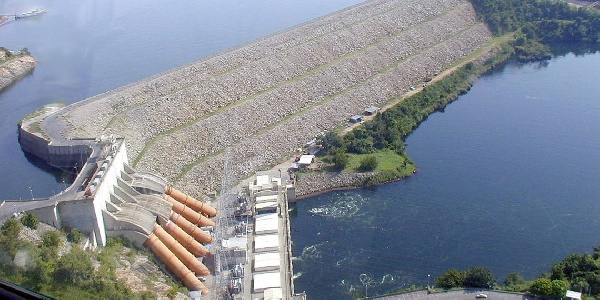
In parallel with the Akosombo Hydro-electric (Volta River) project, Osagyefo Dr. Kwame Nkrumah established the Ghana Atomic Energy Commission in 1963 and initiated the plans for the Ghana Nuclear Reactor Project (GNRP) in November 1964. The object of the project is to utilize the peaceful applications of nuclear science and technology and contribute to education, research, electricity resources, and more. Osagyefo proceeded to lay the first stone for the atomic energy building before he was ousted by a military coup d’état in 1966.
64 Years after Independence
It has been 64 years since Ghana attained independence from colonial rule, to have Osagyefo Dr. Kwame Nkrumah as its first President. At independence, he was convinced that the energy sector held the magic to economic liberation, after achieving political independence.
Given recent happenings in Ghana’s energy sector, it may be fair to ask whether as a people we have been able to live Osagyefo’s dream for the country through energy accessibility and security, to propel the country in achieving the political and economic liberation we so desire.
58 year on, Osagyefo’s GHAIP (now the Tema Oil Refinery) stands out as Ghana’s sole oil refinery in spite of the huge growth in population. At the time of commissioning the 28,000 barrels per day hydro-skimming processing facility, the country’s petroleum products demand could comfortably be met from domestic sources.
Today, TOR cannot meet a third of the country’s daily demand of oil fuels due to operational inefficiencies. Today, the refinery is into the business of providing storage services to the Bulk Distribution Companies for a fee, on the back of idle storage space. The refinery, which was intended to drive economic growth, have rather become a drain on the national economy.
The country is producing oil and natural gas in commercial quantities, but there is absolutely no linkage with the TOR, as envisaged by Osagyefo Dr. Kwame Nkrumah. Ghana’s portion of the produced oil from carried and participatory interest is exported, while TOR continue to refine crude procured from outside the country. Though Ghanaian firms predominantly carry out the marketing of petroleum products, almost 95 percent of the oil sold on the Ghanaian market is by way of importation from mainly the European market.

Presently, close to 15 percent of the Ghanaian population are without electricity, and not the dream of Osagyefo, to have power in every corner of the country to propel economic growth. The country is consistently plagued with power outages, and unreliable supply of electric power to consumers, despite electricity being one of the key factors that contributes to the development of the Ghanaian national economy.
At the current moment, the country has no nuclear power plant. Plans for a nuclear power plant have fallen through repeatedly. The Ghana Atomic Energy Commission is still struggling to build one.
>>>the writer is the Executive Director at the Institute for Energy Security (IES)

